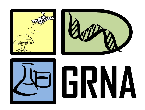Banca de DEFESA: EMANUELLE SILVA GOMES
Uma banca de DEFESA de MESTRADO foi cadastrada pelo programa.STUDENT : EMANUELLE SILVA GOMES
DATE: 17/09/2021
TIME: 09:00
LOCAL: https://meet.google.com/pwk-pdsw-ens
TITLE:
Analysis of Seasonal and Interannual Variability Precipitation in the City of Óbidos – West Pará
KEY WORDS:
Climatology. Variability. Wavelet.
PAGES: 84
BIG AREA: Outra
AREA: Ciências Ambientais
SUMMARY:
Considering the importance of understanding the behavior of climatic variables for a better understanding of the dynamic interactions between the atmosphere, biosphere and hydrosphere, this study aimed to identify the modes of seasonal and interannual climate variability in the data of a historical series of meteorological variable precipitation of the Óbidos region. For this, a historical series of 45 years of meteorological data (1972-2017) of the regular weather station of WMO code: 82178 long-term monitoring of INMET (National Institute of Meteorology) was used. These data were first submitted to descriptive statistics to highlight the average pattern of the data series in question thus verifying which mode of dominant seasonal variability characterize the aforementioned mesoregion, Climatology was represented using boxplot the quantis method to characterize precipitation events within the seasons and establish or delimit ranges with different rainfall regimes. For the analysis of frequency of occurrence of seasonal categories of precipitation, it was made – if the use of histogram. Then, the interannual variability was obtained using the wavelet analysis, later having the results compared with climatic indices. The results showed that the climatology of the area in question has the annual cycle as the main component of seasonal variability, with its wettest periods from January to May and the driest from June to December, corresponding to the direct influence of the Intertropical Convergence Zone (ZTIC). It was defined, the rainy season characterized by the months of February, March and April, transition period from rainy to dry from May to July, dry periods from August to October and the months of November to January as transition from dry to rainy. For the period of 138 months studied, it was observed that 11.6% of the months were considered very dry, 23.2% dry, 29% normal, 24.6% rainy and 11.6% considered very rainy. The annual average rainfall is 1891.8 mm, values found in the data series above this correspond to the occurrence of La Niña, while the less rainy years occurred in El Niño times. The dominant interannual variability corresponds to El-Niño - Southern Oscillation (ENSO), and this phenomenon presented the highest correlation between the analyzed indices and the one with the highest intensities of the power spectrum within the significance level of 95% of the wavelet analysis. The global power spectrum of the ondeletas also showed the influence of the phenomena Quasi-Biennial Oscillation, 11-year Solar Cycle and Pacific Decadal Oscillation, however with less intensity than ENSO.
BANKING MEMBERS:
Externo ao Programa - 1392029 - ANTONIO MARCOS DELFINO DE ANDRADE
Externa ao Programa - 1836872 - CINTYA DE AZAMBUJA MARTINS
Interno - 2034627 - JULIO TOTA DA SILVA
Externo ao Programa - 2160992 - RAPHAEL PABLO TAPAJOS SILVA
Presidente - 1549120 - RODRIGO DA SILVA




